PlayStation Portable, better known as the Sony PSP, has been one of the most powerful and influential video game consoles in the recent history of video games, a console that successfully broke the barrier of the domestic, putting a portable at the height of the desktop consoles of the time. A marvel of technology.
The PSP was the console that Sony designed to conquer the portable market, the only redoubt left to Nintendo after the failure of the Game Cube, leading one of the toughest battles since the days of 16 bits. To this day, the PSP is still a console with a lot to offer, let’s remember Sony’s black beast, the PSP.
| COMPANY: | Sony |
| GENERATION OF CONSOLES: | 7TH GENERATION OF CONSOLES |
| RELEASE DATE: | 2004 Japan, 2005 North America and 2005 Europe |
| GAMES CATALOG: | 1915 worldwide |
| SOLD UNITS: | 82 million units worldwide, 19 million in Japan. |
| LAUNCH PRICE: | 19,800 yen |
| PROCESSOR: | 333 MHz 32-bit based on MIPS |
| FORMAT: | UMD, Universal Media Disc + Digital |
| BUY IT ON EBAY: | https://ebay.us/PF5hah |
- History of the Sony PSP
- Price of a PSP console. How much?
- Collect the PSP.
- Buy a Sony PSP.
- TOP Retro: Best PSP games.
- FAQ SONY PSP.
- Technical characteristics of the PSP.
- Original article from the year 2005.
SONY PSP, SONY’s first portable console
The Sony PSP is the first handheld console from the Japanese giant SONY, the console that was in direct confrontation with Nintendo in the handheld market, entering with the same philosophy with which it had triumphed in the desktop market with the PSX and PS2: Quality, power and an abysmal catalog of games.
Released on December 12, 2004 in Japan for 19,800 yen, Sony’s new handheld put what was, in practice, a portable PS2 in our hands. From playing enhanced Snes games with the Game Boy Advance, we were having the ultimate power and cutting-edge technology in the palm of our hands. A real madness that we were not used to.
History of the PlayStation Portable
In 2004 Sony was by no means a newcomer in the video game market, from its first forays in the 1980s with 8-bit MSX computers, it had become the queen of video game consoles since the mid-1980s. the 90’s with its 32-bit PlayStation, a true killer that revolutionized the world of video games and marked the way forward: optical formats and raw power in polygonal graphics.
The 21st century had just begun, Sony did it again with the launch of the PS2, the console that once again broke world sales records, definitively liquidated SEGA and its Dreamcast, cornering Nintendo with a Game Cube that turned out to be a commercial failure. despite being more powerful. SONY was the undisputed queen of video game consoles in the first decade of the 2000s and its faithful followers numbered in the millions, making it impossible to penetrate the Japanese market with any other console.
Faced with this panorama of total superiority, after having caused the fall of SEGA (one of the oldest and most beloved video game companies), Sony set out to attack the fiefdom of Nintendo and its Game Boys with the most powerful portable console ever. had created.
SONY PSP, the portable PlayStation
The concept of PSP is really simple: A PS2 in your hands, easy. In 2004 this concept meant having the successful 128-bit console in your pocket, all your favorite games versioned anywhere and anytime, owning the console perceived as the most advanced now portable. Assured success. We know that this is not really the case, but it was the perception of the users and the truth is that it was very little from reality.
The PSP was presented to the world as the definitive console, a step forward in the video game industry that brought us a portable for an adult audience: Neither pets nor soccer games at recess with the console in your pocket, the PSP was not a console for children, but for all that public that had been orphaned for many years in the portable market, largely due to the Nintendo dictatorship and its family business policies… That was the market niche from Sony, adults who wanted to take Solid Snake into the jungle or trick their Mitsubishi GTO.
To win over this audience and bring them back to the portable world (considered in those years childish), Sony produced an engineering masterpiece, minimizing its PS2 to the size of a laptop (metaphorically), including new built-in graphics features, a gigantic great quality, controls equivalent to those of its older sister and an anti-piracy optical format. All brimming with quality on all four sides with the addition of being a multimedia console. The PSP was not cheap at all, but the quality/price ratio was very good, a console like this could not be cheap and we were all aware.
The rest came by itself, the studios began to program hundreds of games for the new Sony console, porting, versioning and creating specific games. All the programming experience of the PS2 was largely used in the new PSP, resulting in a huge catalog of games with little or nothing to envy to the PS2. 82 million people gave their approval and bought a PSP, a huge number if we consider that the PSP was far behind its most direct rival, the Nintendo DS.
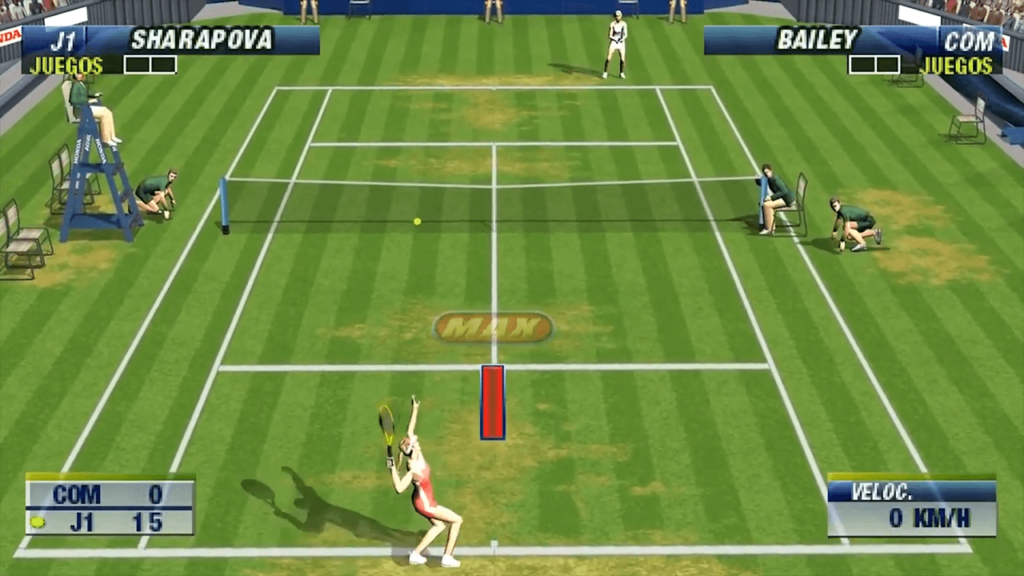
SONY PSP VS NINTENDO DS, the portable war
I perfectly remember the months before the launch of the two new consoles that were going to revolutionize the market and the history of video games. Sony and its PSP, Nintendo and its DS, the world was divided in two again and we all knew that this battle, this war alone, was going to be very different from any that Nintendo had previously fought in the portable field: Now It was no longer enough to launch a balanced and economical console, Sony came with everything championing a diametrically opposite proposal, the most powerful portable of all time under the umbrella of the PlayStation brand.
All the media and players were aware that for the first time, Nintendo started with a disadvantage in the portable market. On this occasion, Nintendo would not beat up its rival, leaving it with derisory sales, the fan phenomenon of the PlayStation brand was at its peak and its followers numbered in the millions. Sony and Nintendo started the hype dance many months before their releases. In summary, the two proposals were as follows:
Creativity and innovation by the NDS against the power and multimedia of the PSP.
The Sony machine was much more powerful in terms of technical features, which is why many of its followers gave the black Sony machine the winner before even starting the battle, a big mistake. Simplifying a lot, it is true that it was like facing a dual-screen Nintendo 64 against a 128-bit PS2, but Nintendo had done its homework and presented a totally versatile and innovative console: Double touch screen, backward compatible, integrated microphone, online connection, pictochat. ..
Even so, for many novelties that the DS included, the PSP started with an advantage thanks to its features, the good brand reputation and the average age of the players: We were no longer kids without purchasing power dependent on our parents as it happened in the 80s ‘ and 90’, those children had grown up and in 2004 the average age of the player was much higher than 18 years, already having our own income.
Consequently, Sony’s strategy of creating a quality console for a teenage and adult audience, being the console to aspire to by the youngest and relegating Nintendo to a merely youthful audience, was simply perfect on paper. The PSP could not be everything and it had chosen its target well, no brick consoles to survive the falls of the game, the PSP was a mature console that would attract many veteran players to the portable field, thus breaking the trend and image that portable consoles were for children. A perfect strategy, except for one thing: NINTENDO.
Nintendo contracted in a masterful way doing what no one would have ventured to predict, expanding its target audience to your mother and grandparents. Yes, yes, to your mother, the one who scolded you for playing the slot machine so much, and to your grandparents too… And best of all, she got it and all that, with the same machine for all of her audiences. Here is the concept of the strategy:
With the same console that launched a Mario 64 or Kirby, Nintendo chose to launch an advertising campaign worthy of study aimed at parents (especially mothers) and the elderly, based on its Brain Training, sudoku games and interactive novels. The Nintendo DS was not just a console, it was a tool to train your brain and have a good time reading. Did you think that video games are for children? Don’t worry, the Nintendo DS is a console for adults and, furthermore, you can enjoy it as a family with your children and grandchildren, in fact they will love you more and you will spend unforgettable family evenings. And it worked…
MASTERPIECE OF ADVERTISING
The result was that Nintendo expanded the market like never before, kept its loyal fans, brought back millions of players who had stopped playing many years ago, and attracted new generations and previously unthinkable profiles. The Nintendo DS democratized video games and broke the barriers of sex and age forever with a single system, which sold a whopping 150 million consoles in all its versions.
Did Sony fail with the PSP? Not at all, still in second place the PSP sold 82 million units between its different versions, a real outrage, a resounding success for its first portable console. In the end, the result of this war of portable consoles was sweet for both companies, Nintendo and Sony shared the cake attacking different audiences and expanding the market for portable consoles to unsuspected limits. This strategy would be repeated shortly after in the desktop market with the Wii, the Xbox 360 and the PS3, with quite similar results in all senses, but this is another story… Let’s continue with the Play Station Portable and its different versions.
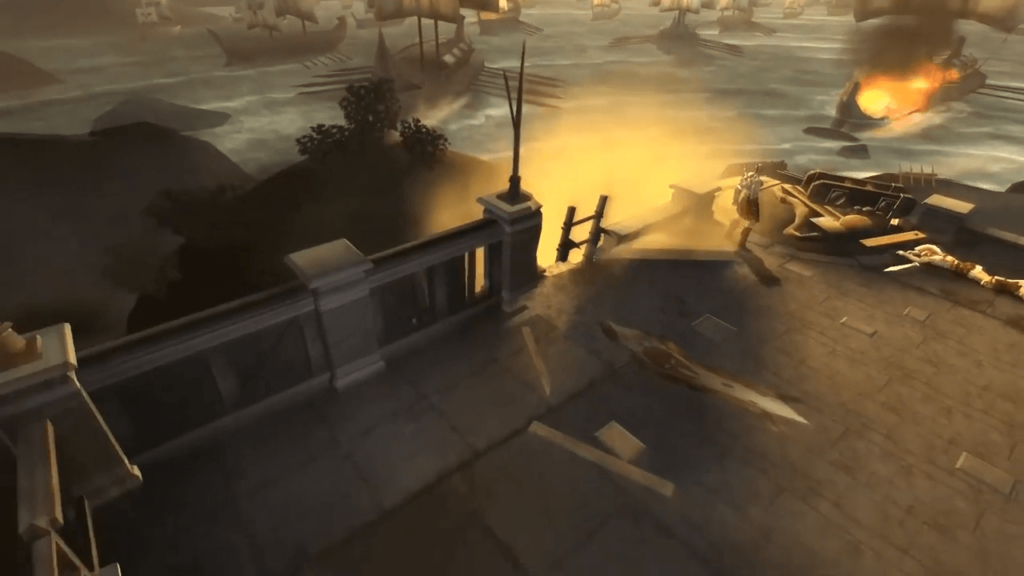
Modelos de la Sony PlayStation Portable
Like all successful consoles, as the years go by, different versions are made to lower costs, include new features and/or modernize its image before the competition. Here we have the different models of the SONY PSP:
Sony PSP-1000
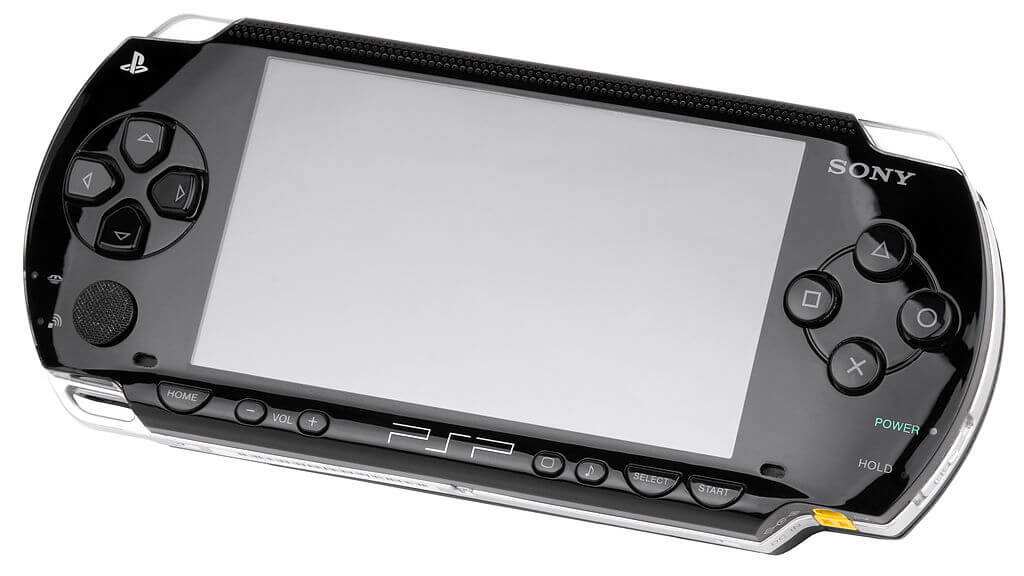
The classic PSP, launched on December 12, 2004. This is the most “fat” model with which we were all stunned the first time we saw it, one of the main differences compared to its different versions is the smaller main memory, 32 MB compared to 64 MB for the PSP-2000 and PSP-3000 and the lack of some features such as connection to the TV.
I take advantage of this point to highlight an aspect to take into account of the PSP consoles, its constant internal evolution: For the first time in portables, we had a system that was expanding functions with each update. Something so common today, it was a before and after in those times, the portables had been until now closed consoles which were perpetuated as the first day, but thanks to the continuous updates of the PSP, we were able to squeeze the most our console and give it many more uses than initially thought.
Sony PSP-2000
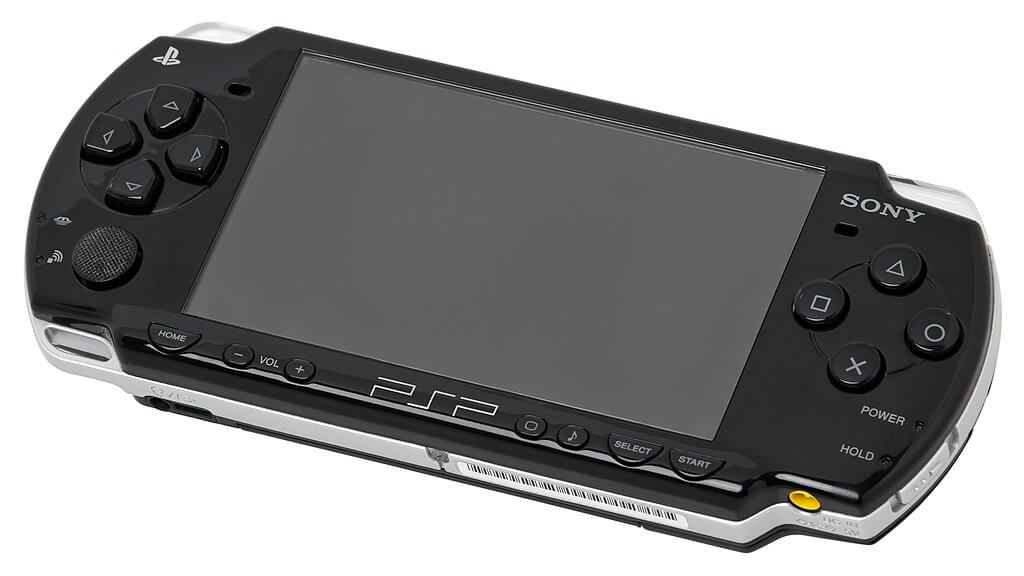
Released on September 5 in Europe and September 20, 2007 in Japan, the revision of the original PSP is thinner and lighter than the first PSP, with the addition of 32MB of main memory (64MB total). The new PSP shortened UMD loading times and brought us the ability to connect our consoles to the television.
The console had other minor changes such as the deletion of the infrared port and the UMD lock lever, as well as the button configuration. In practice, it responds to an optimized revision of the first model, its commercial name was PlayStation Portable Slim & Lite.
Sony PSP-3000
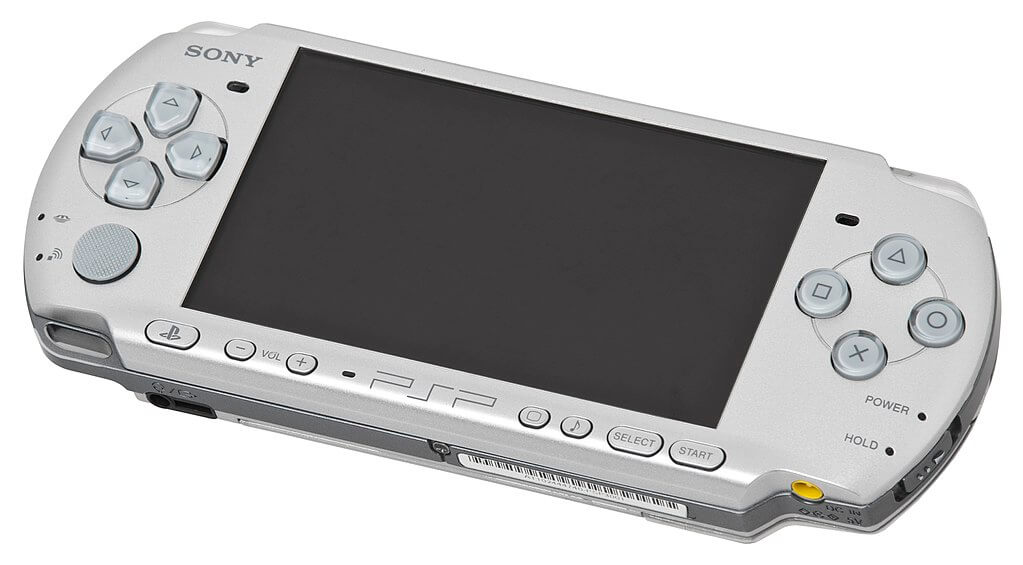
Released on October 16, 2008, this version has an improved screen with higher contrast and response speed, a built-in microphone for Skype conversations (for example) and a more rounded and ergonomic case.
The possibility of connecting our PSP to the television was maintained, as well as the 64 MB of main memory and an improvement in the reading speed of the UMD.
Sony PSP GO
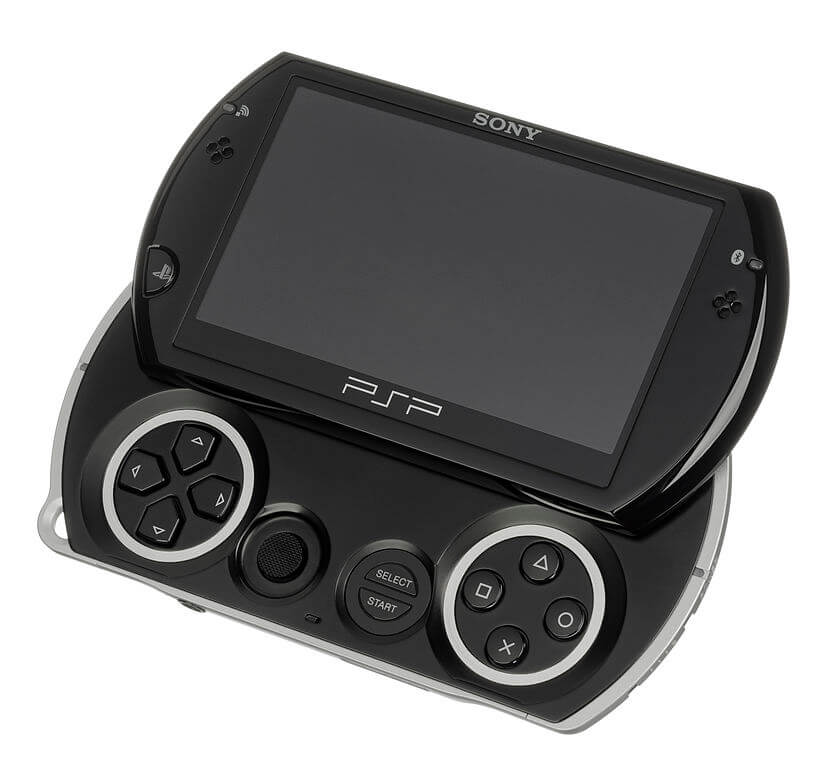
Here Sony freaked out quite a bit. Launched on October 1, 2009 in Europe and North America and on November 1, 2009 in Japan, the PSP GO is the most groundbreaking version compared to the rest of its sisters.
Years ahead of consoles like the Xbox One S All Digital, Sony thought it was a good idea to release a UMD-less handheld focused on digital downloads. He accompanied the idea with a very interesting redesign of the console that made it more portable than ever and added 16 gigabytes of internal memory to save our games… The failure was resounding.
On April 20, 2011, Sony stopped commercially supporting this console, distributing only the units in stock. Sony had advanced many years and it was shown that users at that time were not yet 100% prepared for digital, preferring physical formats, especially when the difference in price of video games did not justify going digital at all. On the other hand, the lack of offers and developed business models such as Game Pass, contributed to the failure of the PSP GO, an extremely interesting console whose concept would eventually be exploited by mobile phones.
Sony PSP-E1000
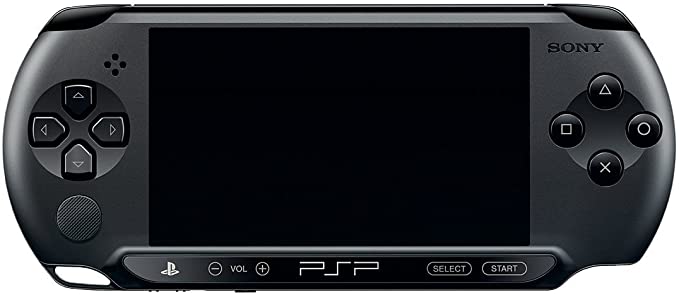
Launched on October 26, 2011, this was the last revision of the PSP in which it became as cheap as possible with a starting price of 99 euros, becoming a “street” console focused on a more childish audience, a classic maneuver in video game consoles when the new generations of consoles arrive.
The wireless LAN was eliminated, having to connect to a PC via USB to update, a speaker was eliminated, having to connect headphones to have stereo sound and the design and housing changed considerably. It was not released in Japan to reinforce the imminent arrival of the PS Vita.
The current gaming experience with the PSP. How has the PSP aged? Is it still playable?
This is one of the key aspects for those of us who are retro console collectors or simply video game lovers. Is the PSP playable today? Can it be our pocket laptop for a long time? Yes, the answer is a resounding yes, the PSP is up to the task and gives us a perfectly playable gaming experience from the approach of a current portable console. I repeat, current.
The PSP is a seventh generation console whose video games are developed and complex enough to satisfy any player. In relation to its technical section, it perfectly measures up to the fact that there are endless video games that, due to their own aesthetics, do not need any improvement, unlike the PS1 here the graphics will not squeak us… After all, we are talking of a modern console that has survived commercially until 2016.
Unlike other portable and retro consoles, with the PSP we have an immense catalog of high-quality games, for which the nostalgia factor will not be necessary at all for their enjoyment, their games alone are capable of offering us hours and hours of fun Today. I think I’ve made it quite clear, the PSP is a console that has crossed the threshold of retro, having works of video games that are already timeless and suitable for any player at any time.
As if this weren’t enough, the PSP scene is one of the most developed, so we’ll be able to play thousands of retro games from other systems with very little effort. The only negative aspect is the console’s batteries, which tend to fail and deform, so check their condition before replaying the PSP.
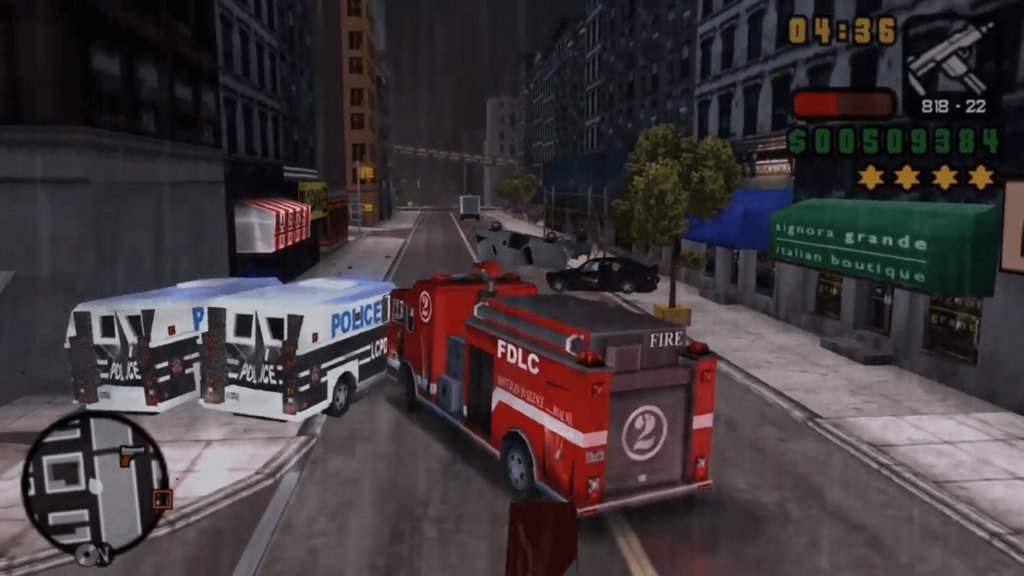
The price of the SONY PSP console
How much did a PSP cost at launch? At Infoconsolas we know perfectly well that it is of little use to say an amount and a date, so as usual here we leave you a list of prices so that you can compare systems and dates, thus understanding what the amount of 19,800 yen.
| CONSOLE | LAUNCH | LAUNCH PRICE | COMPANY |
| Game Boy Pocket | 1996 | 6.800 yenes | Nintendo |
| Game Boy Light | 1998 | 6.800 yenes | Nintendo |
| Game Boy Color | 1998 | 6.800 yenes | Nintendo |
| Neo Geo Pocket | 1998 | 7.800 yenes | SNK |
| WonderSwan | 1999 | 4.800 yenes | Bandai |
| Neo Geo Pocket Color | 1999 | 8.900 yenes | SNK |
| New Neo Geo Pocket Color | 1999 | 6.800 yenes | SNK |
| WonderSwan Color | 2000 | 6.800 yenes | Bandai |
| Game Boy Advance | 2001 | 8.800 yenes | Nintendo |
| SwanCrystal | 2002 | 7.800 yenes | Bandai |
| Game Boy Advance SP | 2003 | 12.500 yenes | Nintendo |
| Nintendo DS | 2004 | 15.000 yenes | Nintendo |
| PlayStation Portable | 2004 | 19.800 yenes | SONY |
As we can see, as the years went by, the portable consoles previously focused on a child audience, expanded the market and features to convince the most adults with a much more powerful and mature product. Obviously, this increased the price of consoles, especially in the case of the PSP.
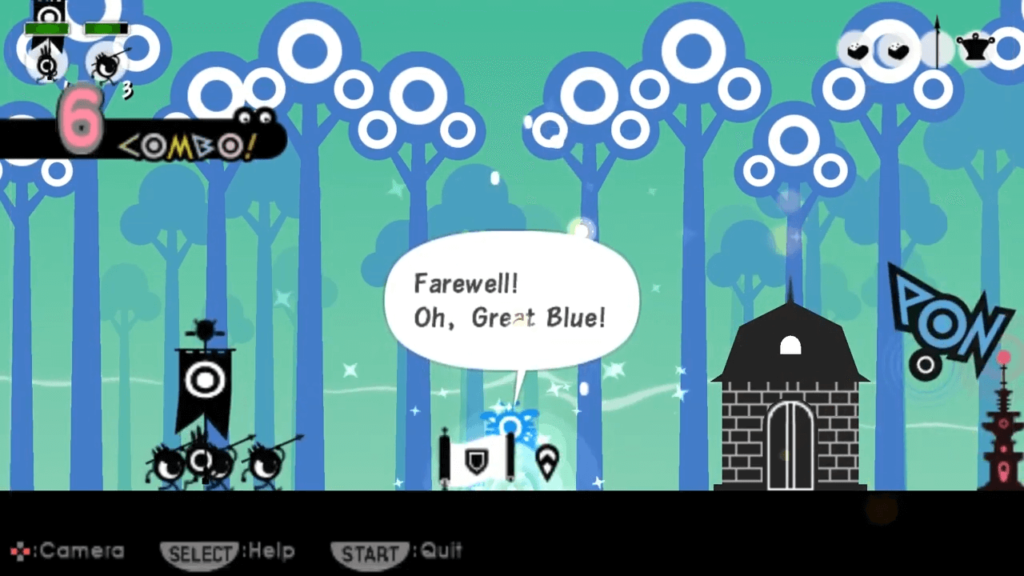
Collecting the Sony PSP
Is the Sony PSP worth collecting? Yes, of course. The PSP is one of the most important consoles in the history of video games: It was the first handheld that could really stand up to Nintendo, Sony’s first foray into the handheld arena, the one that reintroduced millions of home gamers to the handheld market. and the console that successfully brought the benefits of a desktop console to our hands.
In terms of playability, the PSP has one of the largest and highest quality video game catalogues, with video games of all types and perfectly playable today. As far as the machine is concerned, the PSP exudes quality on all four sides… Obviously, to write this article I have taken out my PSP-1000 to reminisce about old times, more than 17 years after its launch, having it in your hands follows you giving respect, impression of cutting-edge technology, quality, precision, its touch, its configuration, its buttons… Everything is where it should be, the PSP is a console that is simply perfect in its concept and proposal. If they launched it tomorrow with the same features, I would buy it again.
The PSP is a must-have console for any collector, luckily, having sold more than 80 million consoles, it is one of the most accessible consoles to get and collect at the moment, having quite cheap prices compared to other systems.
But beware! If someone thinks that this will continue like this for a long time, they are wrong, the prices of everything retro do not stop rising and soon the PSP will have to become fashionable as a nostalgic retro console, as those born in the mid and late the 90’s are growing, acquiring purchasing power and being nostalgic for their children’s consoles. Also, being a portable console and not bothering in terms of space/volume, there are few units that go on sale. So now you know, take advantage of it as soon as possible since, like the Game Boy, Game Boy Pocket, WonderSwan or Game Boy Advance, the PSP is going to go up in price like everything retro with nostalgic value.
Buy a Sony PSP
Is it worth buying a Sony PSP? Yes, without a doubt, both to collect as a retro system, and to play as a portable pocket/bedside console, the PSP perfectly fulfills both tasks. Fortunately for us, its price is one of the most affordable in the world of retro consoles and video games, so in the following link to eBay you will find quite interesting offers both on single consoles and packs with their box and video games.
Being a recent console, we can still find it in flea markets and second-hand stores, being another interesting option for purchase. As always, from Infoconsolas we recommend that before making any impulsive purchase, inform yourself about the current average price of the console, only then will you be able to know if you are buying at a good price or not. Do not be in a hurry and remember that one of the pleasures of collecting retro consoles is the search. Good hunting!
STOP COLLECTOR! If you’ve seen the console listing on eBay, I want to say THANK YOU. Since 2004, the objective of Infoconsolas is to contribute to preserving the history of consoles and video games through our own collection of systems and the hours of work invested in this very website.
Being an eBay partner listing, if you buy a game or console, you will be helping Infoconsolas in the preservation of video game culture, so thank you very much again!
TOP: Best SONY PSP console games
With a catalog of more than 1,300 video games behind him, making a TOP with the best PSP games is truly crazy, a feat of biblical proportions that a mere mortal could never perform… Unless that mortal is called JARM, of course.
On this occasion, in the section on the best PSP games, we offer you the selection that Mr. JARM makes on his YouTube channel, with the magnificent and elaborate video of “The 20 best PSP games of all time (THE TOP DEFINITIVE)”. Let’s enjoy it!
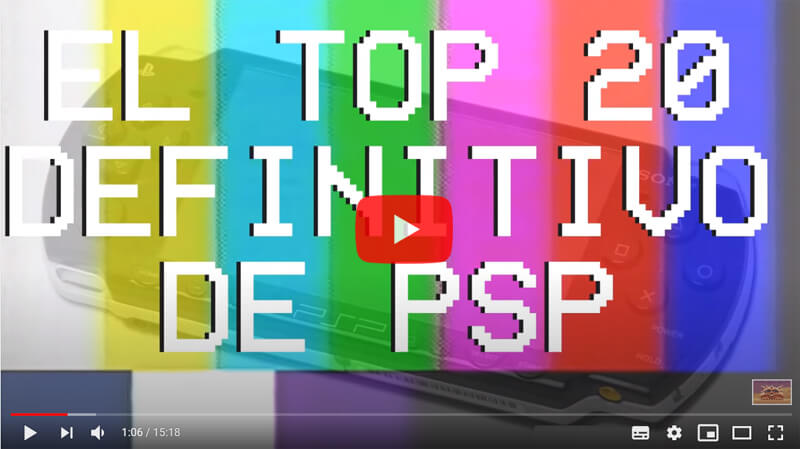
FAQ PlayStation Portable
Here you have the most frequent curiosities, questions and answers about the Sony PSP console, SONY’s first portable.
On December 12, 2004 in Japan.
The starting price of the SONY PSP was 19,800 yen.
1915 video games including duplicities released by different distributors in different regions.
Retro City Rampage DX, released on July 27, 2016. In Japan it was the Kamigami no Asobi InFinite, released on April 21, 2016.
Yes, the games are region free, but not the movies.
To the seventh generation of video game consoles.
UMD, Universal Media Disc.
PlayStation Portable. Portable game station.
No, with rechargeable lithium battery.
Yes, it was launched in the year 2004.
Yes, it was released in all the usual territories of the console and video game industry.
82 million units worldwide, 19 million in Japan.
Grand Theft Auto Liberty City Stories, great game.
Yes, it incorporates WiFi.
Very good, it’s a perfectly playable console with a great scene.
No.
4-6 hours for gaming and 4-5 for video.
Not without a peripheral.
No, it was sold as a peripheral.
Technical characteristics of the SONY PSP portable console
Here you have the technical characteristics of the Sony PSP. As there are different models, we will show the technical characteristics of the PSP-1000:
- Dimensions: 170 x 23 x 74mm.
- Weight: 260 grams battery included.
- Screen size: 4.3 inches.
- Screen format: 16.9
- CPU: 333MHz 32-bit based on MIPS.
- GPU: 166MHz
- Main memory: 32 MB (64 MB on PSP-2000/3000)
- Sub memory: 4MB DRAM.
- Format: UMD
- Memory format: Memory Stick.
- Communication: IEEE 802.11b wireless LAN and infrared communication.
- Analog AV output.
- Stereo analog audio output.
- USB port.
- Memory Stick PRO Duo port.
Original article of the Sony PSP, year 2005
Infoconsolas is a website launched in 2004, so many articles have been created since its inception. In the case of the PSP, we have considered it very interesting to keep the original article on the console, originally published in 2005 in HTML. As you will see, it was a time when the future of the portable console was unknown, being without a doubt a first-hand point of view and approach, very interesting for the complete analysis of the history of retro consoles and video games.
On December 12, 2004 the new PSP was launched in Japan, the price was approximately 150 Euros (in Japan we repeat, in Spain the price was considerably higher), which is surprising, since the manufacturing costs are very high. As usual, being from Sony, the console is almost guaranteed to be successful, with 170,000 units sold on the first day alone.
HOW IS THE SONY PSP?
Sony’s new console, the PSP is not a compressed PSTwo or anything like that, it’s a totally new console, with new components, supports and peripherals. The first thing that caught our attention at Infoconsolas.com about the new Sony laptop is its design. They have really achieved a serious, beautiful and classy console. The 16:9 type LCD screen with dimensions of 4.3 inches of incredible quality, with great definition and its weight of just 270 grams, already make it clear that it is not just any laptop.
Sony has taken great care in its new laptop, and as usual in most of its products, the PSP exudes quality wherever you look at it. The controls of the PSP are the usual ones of the Sony consoles, with the loss of L2 and R2 and the addition of a volume and light control, a good way to save battery, since the screen does not have to be on at all times. 100% backlit or full volume.
The connections and ports of the PSP and its support, already give us an idea of the multimedia possibilities of the console, later we will deal with the multimedia section, now it is better to focus on:
- Its slot for Memory Sticks, where you can store everything you want.
- The headphones for the PSP, with them the gaming experience will be much more real, think of a Metal Gear (for example), thanks to the stereo headphones you will hear the footsteps of the enemy approaching from the right.
- The video output.
- USB 2 port, direct connection to your PC.
- UMD
UMD: This is the format chosen by Sony for its PSP, the Universal Media Disk, this support is similar to a mini DVD, with the addition of a case, which in addition to being a good way to avoid piracy, protects the disk and makes it easy to transport.
Its capacity is really amazing, and also appropriate for a laptop, 1.80 Gigs, more than enough to enjoy the best games. Sony will try to convert its UMD into a standard format, as happened with the mini disk, in this way soon we will be able to see games, music and movies in this format as well as other devices that use it. Time will tell, from Infoconsolas.com we don’t see it completely clear…
But we must not forget its rechargeable lithium battery, which will have a performance of 4 to 8 hours depending on use, or its Wi-Fi technology, with which you can play your favorite games with up to 16 friends at the same time.
Internally (hardware) the PSP is a really powerful laptop, with a frequency speed of 333 Mhz, it contains 2 main processors (CPU) MIPS R4000 of 32 Bits each, these are equivalent to about 10 normal PSX and almost equal in performance to the PSX 2, in theory a PSP can handle 33 million polygons per second. The PSP’s hardware also incorporates many features that previously had to be programmed in software, making programming easier and freeing up CPU resources. Below you can see the technical specifications in its corresponding section.
The PSP is advertised to video game companies as an “easy” console to program, thanks to the similarities between the PSP and the PSX 2, a console already well known and widespread among companies. In this way, a large catalog of games of very good quality is achieved, since they know the system and have the same or very similar programs and programming utilities.
This aspect is very important, a clear example is Sega’s Saturn, a console with incredible features but that was not used due to its extreme complexity for programmers.
As we have mentioned before, the PSP is technically slightly inferior to its big brother, the PSX 2. Even so, it surpasses it in some aspects, such as speed or graphic functions. Components from video game companies, such as the GT4, have reported that through good programming you can get games of the same quality as on the PSX2.
THE SONY PSP AND THE PSX 2
Seeing the PSP it is easy to recognize that they have been clearly inspired by the PSX 2, an aspect that made many people doubt is the game policy, at first it would be easy to launch ports, 1 same game for the 2 platforms (PSP and PSX2), Sony has made it clear that they want the exact opposite, games that are programmed from scratch and variety with respect to the PSX 2.
SONY PSP, A MULTIMEDIA PORTABLE
Multimedia, a word that is more and more present in the world of consoles, many consoles tried it years ago ( CDI , 3DO , Pippin …), but it has really been Sony that has achieved that in a “best-selling” console ( the PS2) you could play games, listen to music, watch a DVD or play online or even record a movie from TV and view the photos from your camera with your PSX DESR-5000 and 7000 (respects to the Dreamcast for this comment).
Well, Sony’s policy with its PSP remains the same, as soon as you turn on your PSP laptop, a menu appears with the options of photos, music, video and games. In its Memory Stick (a Sony card that is considered standard, the PSP incorporates 32 megabytes) you will be able to store music, video… and your recorded games. For video, the 32 Megabytes are a bit short, but don’t worry as you can do it with 128, 256 or 512 Megabyte cards. In this way we have a
portable console – MP3 player – Video Player
Soon Sony intends to distribute movies and music in its new format, the UMD, until this happens we will be able to download our music and video directly from our PC thanks to the USB 2 connection.
Thanks to the same cable, our little PSP will also have access to the Internet through our PC. Initially, Sony (and the software companies) will distribute free content for video games, new maps, characters…
All this is accompanied by simple icon-based menus. Launches of a camera, a keyboard and a GPS are coming soon!! (like our admired Gizmondo)
HOW IS THE SONY PSP FOCUSED?
Sony is aware that the PSP is, above all, a portable console. For this reason, Sony wants its games to be designed for a portable console, and not for a desktop console, a detail that Infoconsolas.com considers essential.
In a console like the XBOX or Game Cube, it is normal to sit in front of the TV and play one or several hours in a row, in a portable the concept is totally different, the PSP is oriented to play in those moments that you are waiting for the bus, subway , a break at the university, a recess… This means that the games are often of short duration, for this reason the games will have to have “save game” points much more often, a more direct access to the game itself (less menus) and surely there will be some more “intense” specific games, in the style of mini-games.
As you can see, the PSP offers us to enter a new world of possibilities, the competition will be tough, we are sure that Nintendo DS will not make it easy for them, although surely Nintendo will continue with a marketing policy aimed at a public that is not as adult as the from Sony. You also have to think about consoles like:
- GBA: There are millions of units sold and a market for many more years.
- GP32: Really powerful console with a great scene.
- Zodiac: A mix between a laptop and a PDA.
- Gizmondo: A really amazing laptop, perfectly comparable to the PSP.
The PSP was released in Europe and America in the spring of 2005. If you want to save some money you can buy a second-hand PSP on Ebay (recommended).
END OF ORIGINAL ARTICLE FROM 2005
External sources and links
- Famitsu magazine
- Console graphic resources:
- https://commons.wikimedia.org/wiki/User:Evan-Amos

